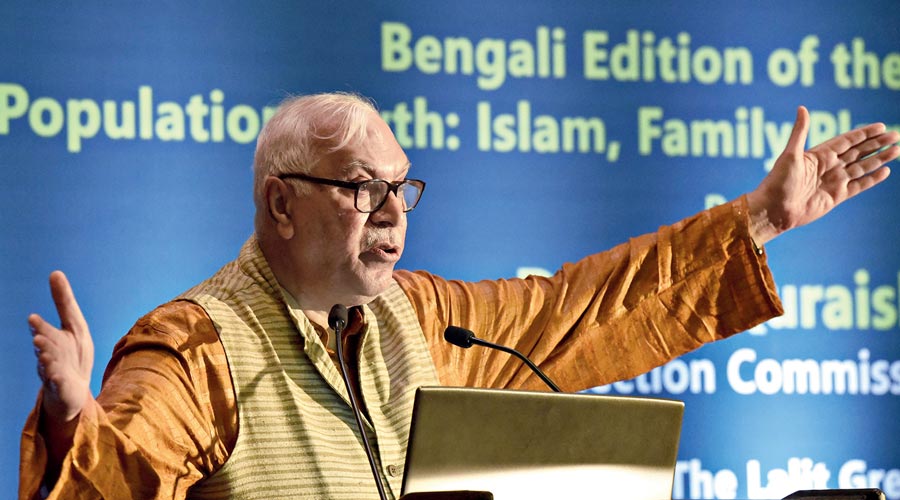- Between 1951 and 2011 Census, a net increase in the Muslim population in India was 13.6 crore. That of Hindus was 67.6 crore
- The fertility rate, the number of children a woman would have in her lifetime, was 2.61 among Muslims, according to the 2011 Census. The rate was highest among all religions. Hindus were at the second spot, at 2.13.
A book that uses statistical evidence to bust the myth of Muslim overpopulation was launched in the city on Friday.
Janapuran — Islam, Paribar Parikalpana Ebong Bharatiya Rajneeti, the Bengali translation of Population Myth: Islam, Family Planning and Politics in India, was launched by the original author, S.Y. Quraishi, former chief election commissioner of India.
An ever-increasing rhetoric of the Right-wing ecosystem on the “exponential” growth of Muslims has for long stoked majoritarian fears of a skewed demographic. The fear is perhaps best mirrored by the slogan, Hindu khatre mein hain (Hindus are in danger), propagated through non-stop posts that bombard the social media.
In the book, Quraishi uses facts, much of them sourced from government studies, to demolish that myth.
During his keynote address at the launch programme at a city hotel’s packed auditorium on Friday, Quraishi, the 17th chief election commissioner of India, gave a Powerpoint presentation.
The presentation began with a video that he received last week, one that represents the majoritarian fear.
The video shows a young man from Gurgaon in Haryana, part of a group wearing saffron robes, ranting about the Muslim birth rate. “An average Muslim fathers eight children…. This way, they will eventually change India’s demography and there will be a Muslim Prime Minister by 2029,” he goes on to say.
“This population myth is creating fear and hostility among the Hindus against Muslims,” Quraishi said. With examples, Quraishi asserted that political patronage fuelled such propaganda.
In the course of his address, he also cited some numbers.
- According to the National Family Health Survey (2015-16), Muslims were at the bottom when it came to adopting family planning measures. Only 45.3 per cent of Muslim families adopted family planning. Hindus were only one spot up at 54.4 per cent.
- A Union government study in 1975 found that Muslims were the least — at 5.7 per cent of their population — polygamous among all communities in India. At 5.8 per cent, Hindus were second least. With 922 females for every 1,000 males, polygamy was statistically impossible in India.
The book has delved into the Quran and Hadith to show that Islam might have been one of the first religions in the world to actually advocate smaller families, which is why several Islamic nations have population policies.
The book includes graphs and charts to show how fertility is linked to socio-economic factors like literacy, income and delivery of family planning services.
Kerala, for example, has the lowest FR at 1.56. Bihar has the highest at 3.41.
The book launch was followed by a panel discussion that included the Jawhar Sircar, author, Rajya Sabha MP and former chief of Prasar Bharati; Lt Gen Zameer Uddin Shah, former deputy chief of the Indian Army and former vice-chancellor of Aligarh Muslim University; Bikash Ranjan Bhattacharyya, Rajya sabha MP and former mayor of Calcutta; and Kunal Sarkar, cardiac surgeon and president of the Calcutta Debating Circle.
